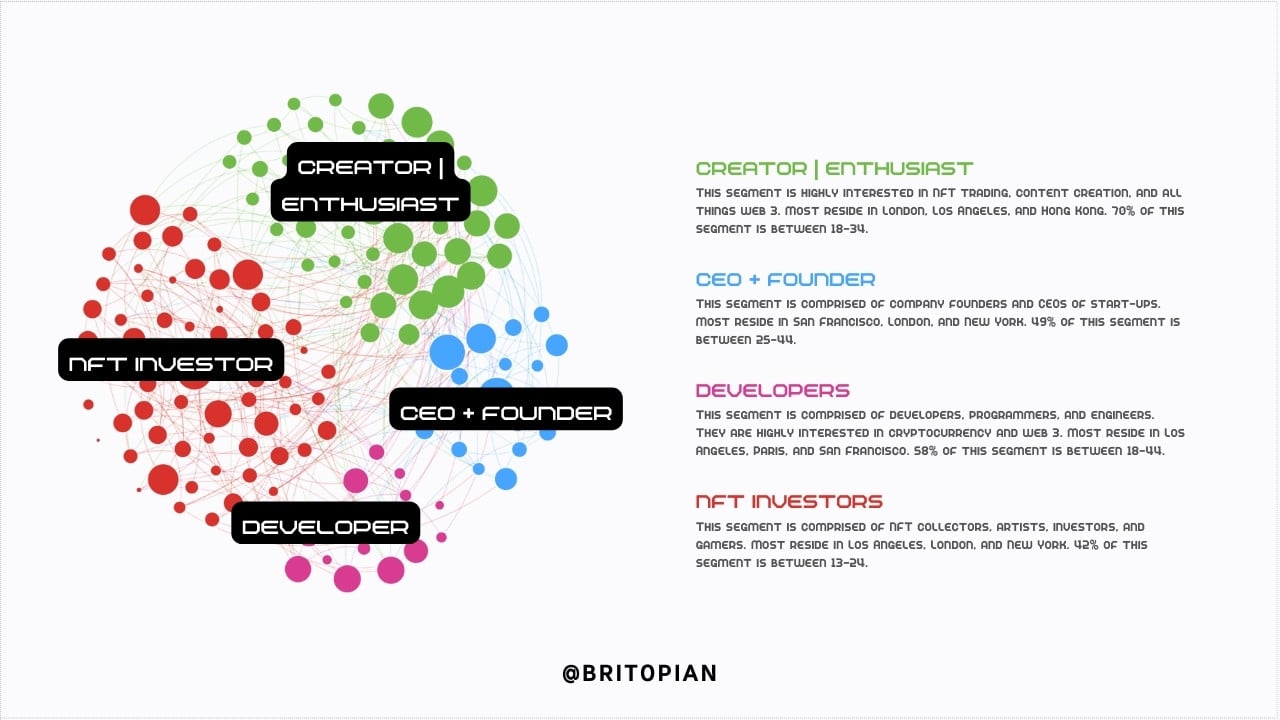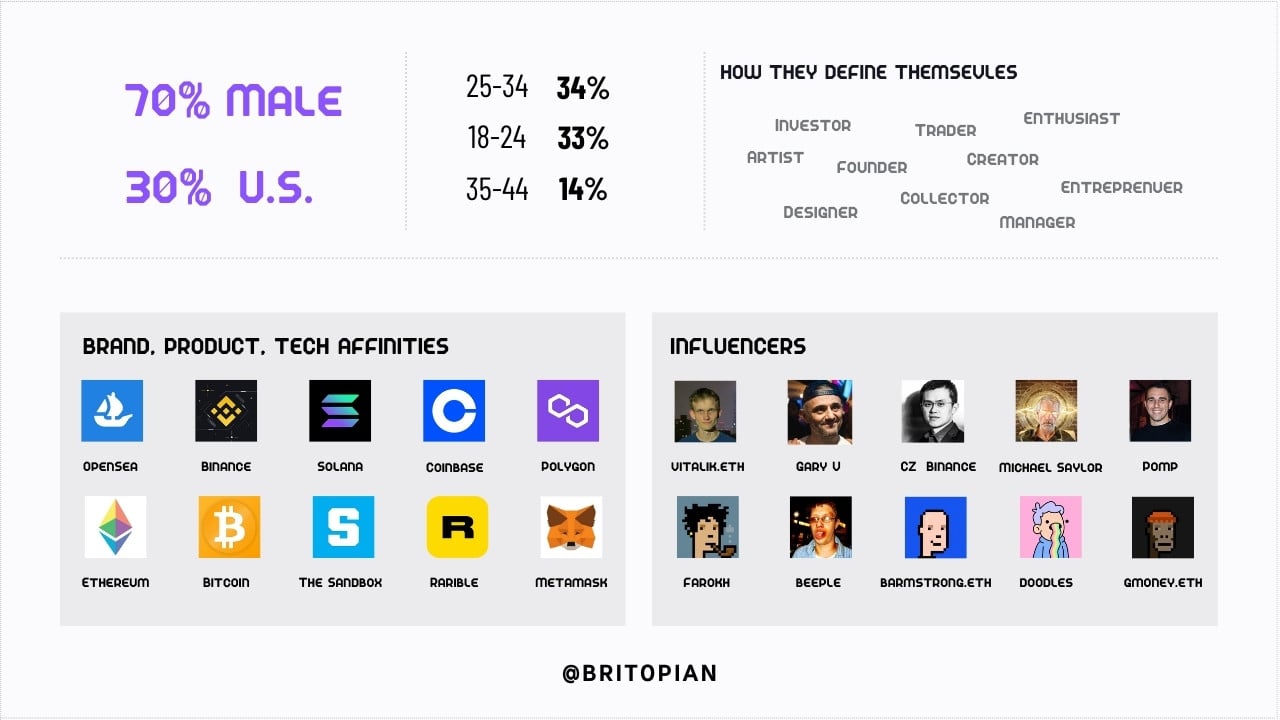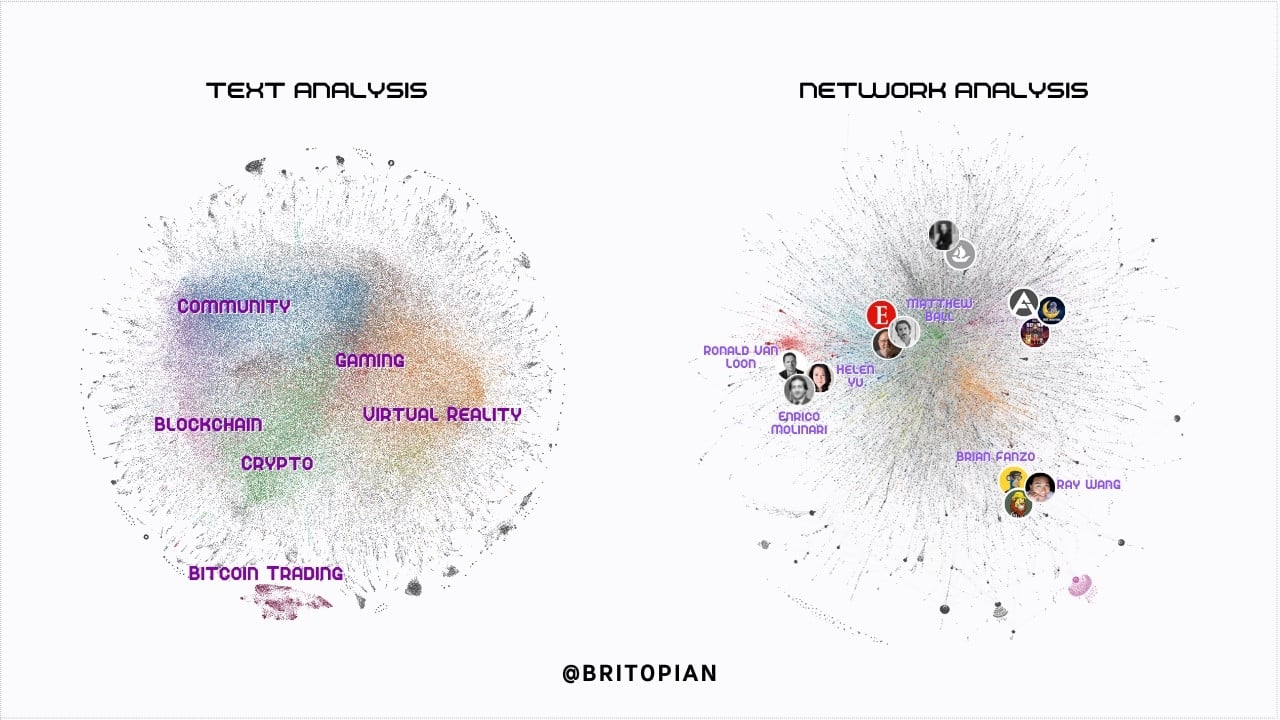Understanding the online community behind the metaverse & web 3
Despite what some critics say, the metaverse is the real deal.
The metaverse is used to describe the virtual world that exists on the internet. It is made up of innovative technology, community features that integrate social media, and other online spaces where people can interact with each other. The metaverse is evolving quickly as web 3 technologies, NFTs, and blockchain adoption increases.
According to Pew Research, 54% of experts said that by 2040 the metaverse will be a fully-immersive community, and completely integrated into the daily lives of more than a half billion people globally. While that is 18 years away, it’s never too early to start planning for the future. Several forward-thinking universities are now offering metaverse research and courses as a part of their core curriculum.
Understanding the community behind the metaverse is essential for businesses and individuals who want to be a part of this growing ecosystem. The community comprises early adopters, developers, and enthusiasts passionate about the metaverse's potential and what it brings to business, society, and culture. They are building the infrastructure and creating the content that will shape the future of the metaverse.
Brands are also starting to take the metaverse seriously. They are beginning to understand that a metaverse is a powerful tool for connecting with customers and prospects. Using the metaverse for business is a no-brainer. Brands like Nike, Wendy’s, Samsung, Atari, and Forever 21 are launching their own spaces, participating in existing ones, activating campaigns, and having fun doing it. They are going beyond marketing. Some of these spaces are being used for customer service and product innovation.
The metaverse phenomenon is intriguing, and it's not going away anytime soon. So I wanted to do an audience analysis to uncover the hidden metaverse narratives and the audience driving the conversation.
The metaverse audience
The audience was built using two different approaches. The first was scraping social media bios for keywords related to metaverse and web 3. The second was scraping all mentions of metaverse and web 3 and downloading the authors. Both audiences were combined and then uploaded to Audiense for analysis. The total audience size is 28K social profiles.

This data represents the entire community without audience segmentation. You’ll notice that most of the audience is male, with 34% being Gen Z. They define themselves differently within their social media profiles, from founders and investors to CEOs, collectors, and enthusiasts.
As you’d imagine, they have very high affinities for NFT marketplaces, crypto wallets, gateways, and virtual worlds like the SandBox. In addition, they are highly influenced by industry leaders like Gary V, the CEO of Binance, Changpeng Zhao, Michael Saylor, the Chairman & CEO of MicroStrategy, and Mathew Ball, author of “The Metaverse: And How it Will Revolutionize Everything.”
I firmly believe that real audience insights only happen when an audience is segmented into subgroups. There are several ways to segment an audience–gender, location, generation, interests, culture, etc. In the below example, the audience is segmented by affinity and broken down into four distinct sub-segments:
- Creator | Enthusiast: This segment is highly interested in NFT trading, content creation, and all things web 3. Most reside in London, Los Angeles, and Hong Kong. 70% of this segment is between the age of 18-34.
- CEO + Founder: This segment comprises company founders and CEOs of start-ups. Most of them live in San Francisco, London, and New York, and 49% are between the ages of 25-44.
- Developer: This segment is composed of developers, programmers, and engineers. They are highly interested in cryptocurrency and web 3. Most of them reside in Los Angeles, Paris, and San Francisco. 58% of this segment are between 18-44.
- NFT Investor: This segment is composed of NFT collectors, artists, investors, and gamers. Most reside in Los Angeles, London, and New York. 42% of this segment is between 13-24.
If this were a full-scale analysis, each segment would be analyzed further for media affinities, influencers, and the top conversations driving the metaverse narrative.

Metaverse topical analysis
One of the critical factors of audience analysis is identifying the key topics and trends fueling their conversation. While many social media monitoring platforms can aggregate and categorize conversations, text analytics is the best way to find insights.
Text analytics uses natural language processing and machine learning to extract meaning and context from text. It can be used to analyze text-based data sets, such as social media mentions, surveys, articles, blogs, etc.
Under normal circumstances, I would have used the 28K social profiles and analyzed their conversations. Instead, I used Graphext to scrape Twitter of all ‘metaverse’ and ‘web 3’ mentions over the last six months. The cluster analysis below shows the topics that are being mentioned.
- Community: The NFT community is tight. They support each other's projects and initiatives. They also support new community members, often providing them with education and resources to learn more about the metaverse, NFTs, and more.
- Gaming: It could be argued that gaming paved the way for the metaverse. Gamers would certainly agree, as they have been early adopters of metaverse communities for years.
- Virtual Reality: This conversation focuses more on the technologies, platforms, and hardware that supports virtual reality.
- Crypto: The conversation is broad, with most people sharing crypto news, jobs, and investment recommendations.
- Blockchain. The conversation is dominated by investors, founders, and industry leaders discussing how blockchain will revolutionize commerce within the metaverse.
- Bitcoin Trading: These day-traders share tips and tricks about Bitcoin trading.
While this is just a summary of the larger metaverse conversation, text analytics can drill down further within each data set and uncover additional insights.
Metaverse network analysis
Also, using Graphext, I used the same data to map a network of people involved in the metaverse conversation. Rather than focusing on the content and conversation, I wanted to discover various communities and understand the connections between each one.
The critical variables in this dataset are degree, cluster, and engagement. Degree counts the number of connections an author has in the dataset. Clusters group content according to the relationships between the authors. Finally, engagements are the number of times the content was interacted with by more than one user.

There are thousands of communities talking about the metaverse. I highlighted a few in this network analysis because I recognized a few names in the data. So you might see familiar faces like Enrico Molinari, Ronald van Loon and Helen Yu in the red cluster. In the blue/green cluster, you’ll see Matthew Ball (again) clustered alongside The Economist. And in the orange cluster, you’ll see Ray Wang and Brian Fanzo.
One outcome of network analysis is identifying large and small communities around a particular topic, in this case, the metaverse. It's also an excellent way to discover new influencers that may not have very large audiences.
How to use this data
Social listening and audience analytics are powerful ways to understand communities for marketers. In the case of the metaverse, it’s still an emerging topic with much hype and speculation. However, you can incorporate these findings into your digital marketing plan by understanding the key topics and trends driving the conversation.
For example, if you want to reach the NFT community, you could create content that appeals to their interests in gaming, virtual reality, and crypto. You could also partner with influencers who are already involved in this community.
Suppose you want to reach the blockchain community. In that case, you can develop a messaging strategy that discusses how the metaverse will revolutionize commerce and buy media in the channels where the audience spends most of their time.
Finally, if you want to reach the general metaverse audience, you could create content that covers various topics related to the metaverse. You could also partner with a mix of influencers, including those from the NFT and blockchain communities. Again, understanding your target audience's interests and creating content that appeals to them is essential. Social listening and audience analytics can help you do just that.






